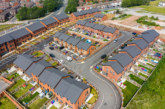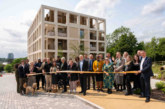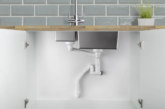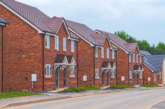 Matthew Warburton, Policy Advisor for the Association of Retained Council Housing (ARCH), discusses the need to update the Decent Homes Standard.
Matthew Warburton, Policy Advisor for the Association of Retained Council Housing (ARCH), discusses the need to update the Decent Homes Standard.
Early in 2021, the Government invited ARCH and other sector bodies to join a sounding Board to begin the review of the Decent Homes standard that was promised in the Housing White Paper published in the previous year. Four meetings were held to review the case for updating each of the four criteria in the current definition of a decent home.
Following a decision that the Standard did indeed need to be updated, meetings began again early 2022 to discuss the necessary changes but were soon paused. The reason became clear when, in June, the Private Rented Sector White Paper announced the Government’s intention to extend the DHS to cover private rented homes. Meanwhile, the Levelling up White Paper included a commitment to halve the number of non-decent rented homes by 2030, “with the biggest improvements in the worst-performing areas”.
Meetings of an expanded sounding Board, now also including bodies with interests in the private rented sector, began again earlier this year, working to a very tight timetable so that the updated DHS can be ready before legislation applying it to the private rented sector comes into force. It looks likely that there will be a formal consultation on the proposed changes later this year.
Long overdue
There can be no denying that the DHS is in need of updating; the current version dates from 2006 and contains several features that now seem difficult to defend. To be decent, a home must be in a reasonable state of repair. It will be non-decent if one or more “key” building components are old and, because of their condition, need replacement or major repair, or if two or more other building components are old or in poor condition.
Unlike roofs and windows, kitchen and bathroom fittings are not defined as key components because, if they are in poor condition, this may have no immediate impact on the structural integrity of the building. so a home may have either a kitchen or a bathroom that is old and in poor condition, but will be classed ‘decent’ unless both are.
Another criterion of decency is that a home must have reasonably modern facilities and services. A home is considered not to meet this criterion if it lacks three or more of the following facilities:
- A kitchen which is 20 years old or less
- A kitchen with adequate space or layout
- A bathroom which is 30 years old or less
- An appropriately located bathroom and WC
- Adequate external noise insulation
- Adequate size and layout of common entrance areas for blocks of flats
Here again it is possible for a home to be judged ‘decent’ even though it lacks an adequate modern kitchen or bathroom (but not both).
Costs of implementation
If the aim is for the DHs to set a minimum baseline that every tenant should be able to expect in the third decade of the 21st Century, it must surely aim to ensure that every home included all the facilities listed above — and in good working order.
These are only two examples where there is a need for an updated DHS to lift the bar that landlords are expected to meet. But meeting the new standards will inevitably mean additional costs, alongside those arising from the new building safety regime and the need for decarbonisation, which will put additional pressure on future rent levels. When the new standard is put out for consultation, we will need a serious discussion with government on costs of implementation and how they are to be met.
Header image: ©teamjackson/AdobeStock










